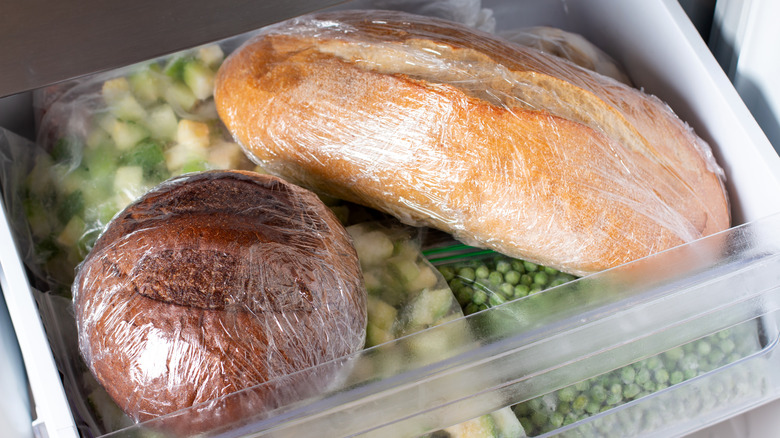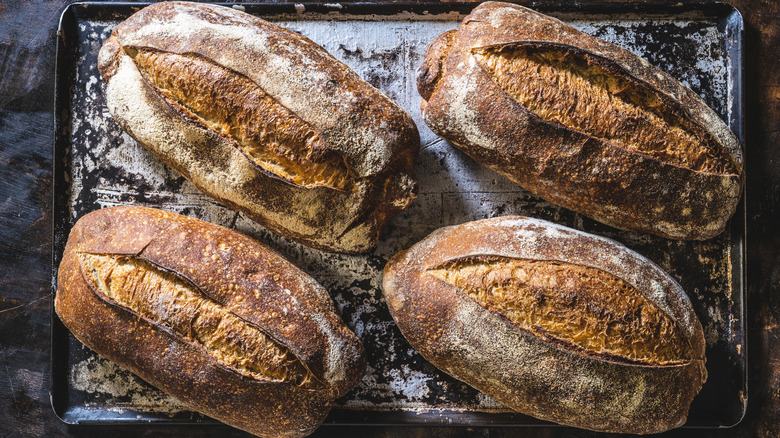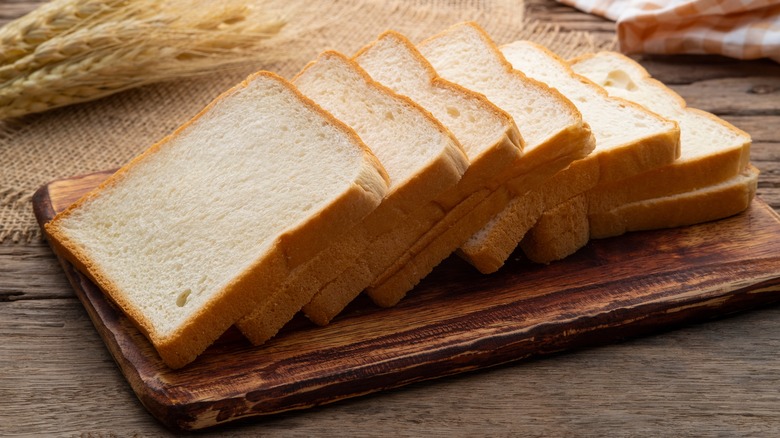How Freezing Your Bread Affects Its Texture
Sometimes the fact that things won't be around forever makes them extra sweet, but when it comes to bread, it's mostly just disheartening. After just a few days, your once soft and fluffy baguette will be harder than a rock. The fact is frustrating, but luckily there is one way to keep bread from going stale quickly like this, and that is to start storing your loaf in the freezer. Freezing bread keeps it staying fresh for a much longer period of time than other storage techniques, upgrading its shelf life from three days to three months. Still, this method might come with some drawbacks too. For instance, do you know how the freezer affects the texture of your bread?
Let's start with some basic facts. Bread gets stale over time because its natural starches slowly crush in close together as the loaf interacts with air. This makes the molecules within bread condense, and it will become harder as a result. That's why bread that's left in the pantry, or in above-freezing temperatures, gets stale within a matter of days. Unfortunately, there's nothing to stop this process from happening. The only surefire way to slow it down is to use your freezer. With its extreme cold temperatures and lack of air, a loaf of bread will stay fresh there. And luckily, even though it hardens in the cold, your loaf will quickly return back to its original texture with just one round in the toaster.
How the freezer alters the texture of your bread
After you stick a loaf of bread in the freezer, even just overnight, those below-freezing temperatures cause the starch within bread to break down and become resistant starch — stopping the usual degradation process in its tracks. But hey, once you're ready to eat your bread, you don't have to worry about this simple chemical change affecting the texture.
When it's time to reheat your bread, the warm temperatures will re-gelatinize the starch inside, causing those molecules to take on their original crystalline structure. This returns the bread's familiar fresh textures and wholesome taste. So, as long as you eat your bread before the three-month mark, which is where it will start to potentially lose some of its freshness, the texture should not change at all long term. While the eventual end texture of this starch will always depend on how you freeze and thaw your bread, some loaves will do better than others when stored in a cold environment.
All the bread you can freeze, and the ones you perhaps shouldn't
Most breads will keep well in the freezer, but loaves made with minimal ingredients will store the best in frozen environments. For example, you can easily store focaccia bread in the freezer, as well as sourdough or any other simple loaves made simply of just flour, water, and salt. Pre-slice this bread before freezing so you have no trouble portioning it out later on, and you can be stocked up on bread for months. Now other breads full of excess fat and dairy, such as brioche or biscuits, might not keep as well frozen, as all those extra ingredients can react differently in extreme cold environments. Keep a close eye on breads in your freezer like these as they may lose some of their fluffy textures in the cold over time.
The shelf-life of all frozen bread will vary, but generally each loaf will hold onto its original quality for up to three months —but they can stay fresh for up to six. Any longer than that, and you risk some dreaded freezer effects like freezer burn, so don't risk it. Now once you're ready to indulge in a slice of bread from the freezer, you can simply reheat it in the toaster or oven as normal, and most likely, those same freshly baked textures you first loved about the loaf will remain.


